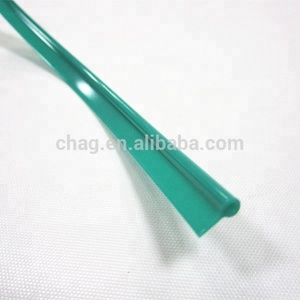(159 products available)













































































































































































































Cord piping trim is a decorative and functional fabric used to enhance the appearance and durability of various items such as upholstery, cushions, curtains, and clothing. It consists of a cord enclosed in fabric, creating a distinct, rounded, bulging edge. It is available in different materials, sizes, and applications. Here are some of its common types:
Upholstery Piping Cord
This piping cord is used in furniture upholstery. It has a durable cotton or polyester fabric covering and is used in sofas, chairs, and ottomans. It defines shapes and adds style. The cord inside varies in thickness and flexibility to suit different upholstery needs.
Cushion Piping Cord
This type of piping cord is used in making cushions and pillows. It is soft and flexible to make it comfortable. It has a polyester or cotton covering and adds shape to cushions. The cord inside is light and thin to make it easy to sew.
Bag Piping Cord
This piping cord is used in making bags and luggage. It is strong and has a polyester or nylon covering to make it durable. It outlines pockets and straps and adds structure to bags. The cord inside is firm and thick to support the bag's structure.
Clothing Piping Cord
This cord is used in apparel trim and gives a tailored look. It has a cotton or polyester covering and is used in collars, cuffs, and pockets. It outlines details and adds contrast to clothing. The cord inside is thin and flexible to make it easy to sew into clothing.
Outdoor Piping Cord
This piping cord is made of acrylic or solution-dyed polyester. It adds weather resistance to outdoor furniture and cushions. It is UV resistant and supports various outdoor applications. The cord inside is firm and thick to support the structure and withstand outdoor conditions.
Piping trims are available in a multitude of designs. The design that piping trim will be selected will depend on the style and décor of the furniture and the effect that the piping is meant to achieve. Here are some of their designs:
Here are five wearing and matching suggestions for cord piping trim:
Q1: What are the types of piping cords?
A1: There are different piping cords made from various materials. Polyester piping cord trim is durable and can withstand high temperatures. Cotton piping is soft and flexible, making it ideal for home textiles. Silk piping is luxurious, while jute piping is eco-friendly. Nylon piping cord is strong and versatile, and velvet piping is plush and elegant.
Q2: What are the dimensions of piping trim?
A2: The dimensions of piping trim vary. The diameter ranges from 0.6 cm to 3 cm. The length of the trim ranges from 10 to 200 m. Custom sizes are available.
Q3: How can someone choose the right piping cord?
A3: Choose the right piping cord by considering the project. For upholstery, select a sturdy polyester or cotton cord. Silk piping suits curtains and cushions. Jute and nylon cords are versatile for various applications. Consider the cord's diameter and flexibility for the project's requirements.
Q4: How to store cord piping trim?
A4: Store piping trim in a cool, dry place. Use spools or bobbins to prevent tangling. Keep them away from direct sunlight. Store them in a well-ventilated cabinet or drawer. Avoid storing them in humid or damp areas.
Q5: Can piping cord be dyed?
A5: Yes, piping cords can be dyed. Use fiber-reactive dyes for cotton and polyester cords. Silk cords require acid dyes for a vibrant color. Follow the dyeing process carefully. Heat the dye and immerse the cord until the desired color is achieved.
The keyword "cord piping trim" in the Apparel & Accessories category shows a significant upward trend in web search volume, averaging 40 monthly web searches with a substantial 250% increase over the past three months and a 75% increase over the past year. The 12-month data presents a fluctuating pattern, with search peaks and troughs corresponding to various seasonal demands.
Analyzing the monthly search data for "cord piping trim" reveals a dynamic trend throughout the year. Beginning with 40 web searches in December 2023, the volume slightly increased to 50 web searches in January and February 2024, then dipped back to 40 in March. A further decline to 30 web searches was observed in April and May, before a rebound in June to 40 web searches. The trend continued with alternating periods of increase and decrease, reaching a low of 20 web searches in September and a high of 70 in November.
This fluctuation in web search volume can be attributed to seasonal trends and consumer behavior in the apparel and accessories market. Higher web search volumes in months like November could correlate with increased activity in preparing for holiday seasons, where retailers and consumers alike look to update or enhance their product offerings. The sharp increases and decreases in web search volume also suggest that specific events or market activities could be influencing interest in cord piping trim, potentially aligning with fashion cycles or promotional periods within the industry.